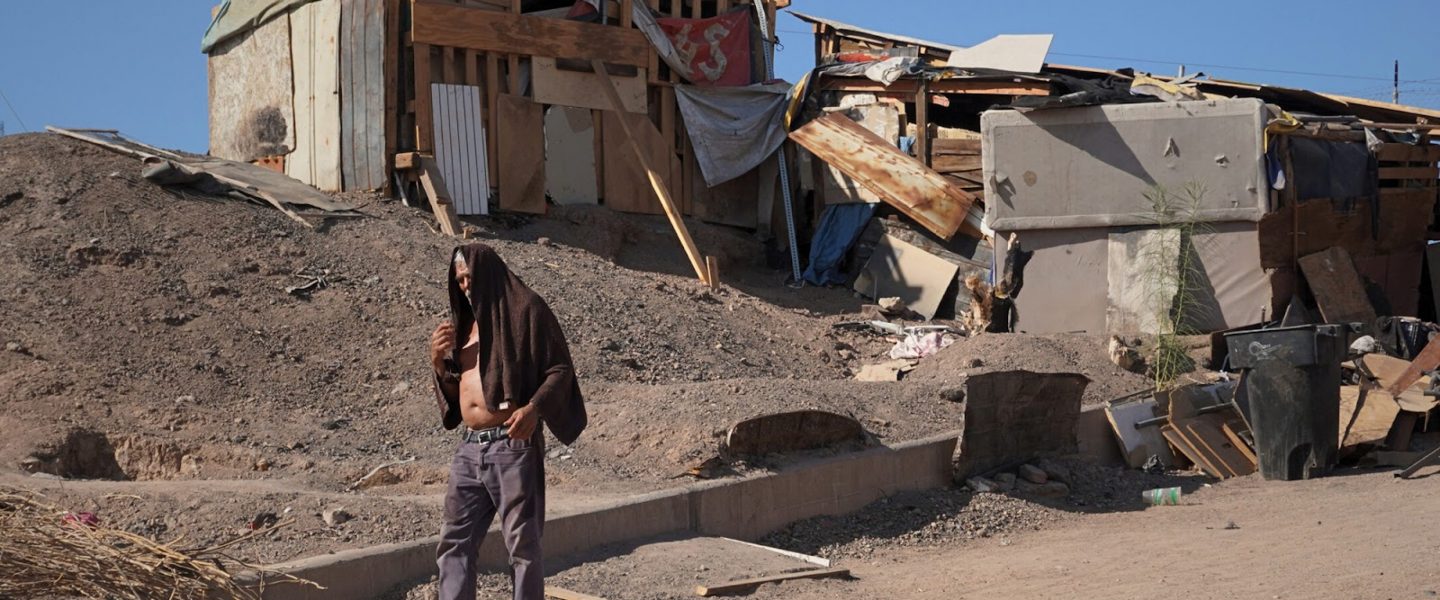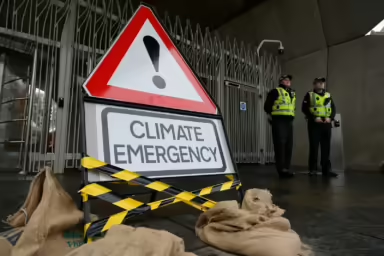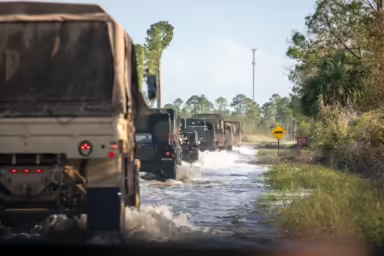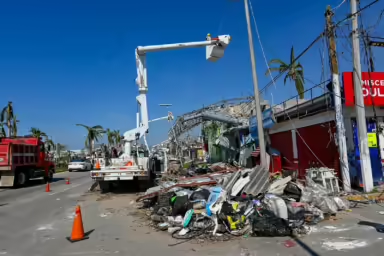The city of Calexico has few resources for the homeless, leaving individuals to survive by scavenging shade and relying on the goodwill of nonprofits.
|
Listen To This Story
|
The triple-digit heat of Calexico, just north of the Mexico border in California’s Imperial County, can be deadly to those without shelter. The average July temperature there is 107 degrees, among the hottest in the US. This summer, temperatures on some days topped 118 degrees.
Elevating that deadly risk is the fact that the city’s lone cooling center, the public library, is open only five to six hours a day on weekdays.
In addition, the Catholic Charities Diocese of San Diego shut down Calexico’s only homeless shelter for men on June 30 when it could not afford to fix storm and earthquake damage the building had sustained over the years.
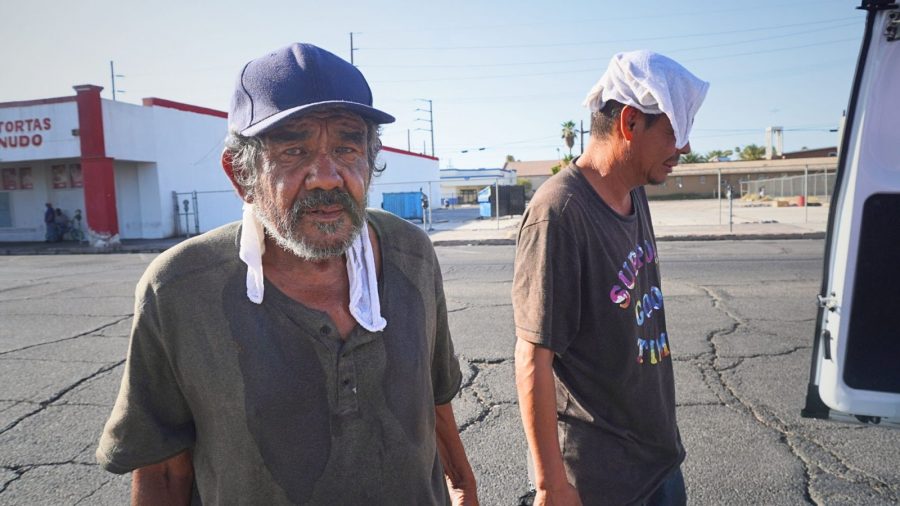
The Calexico City Council recently approved $50,000 from federal funds to develop a new cooling center. The shelter is scheduled to open this month. But relief can’t come soon enough for the over 1,000 unhoused people in Imperial County.
One local nonprofit organization, Brown Bag Coalition, is a familiar sight to many of these men. This volunteer-led organization provides them with meals, clothing, toiletries and, on hot summer days like this one in late July, ice-cold water.
I have been a Brown Bag volunteer since 2020.
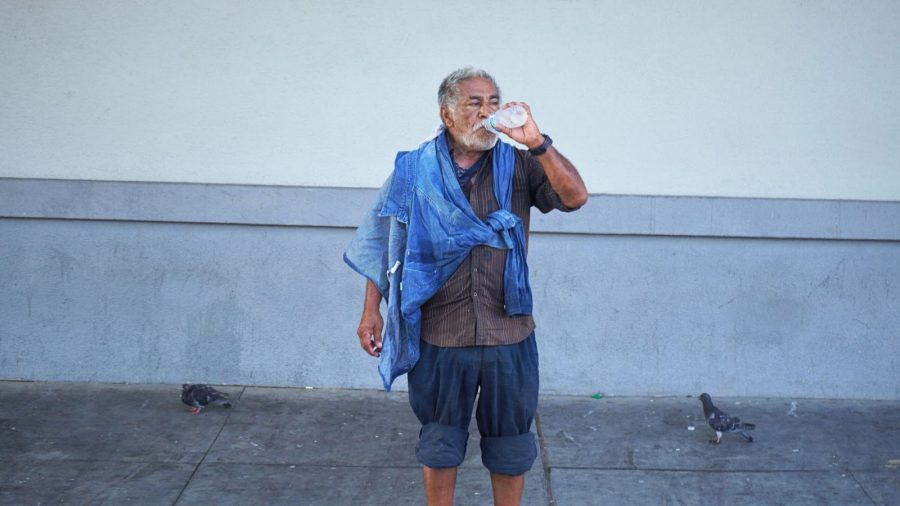
The men I see when passing out food and clothes tell me they survive all day and night (when temperatures can still hover in the mid-80s) by improvising any shelter they can — the brief shade falling on the side of a building, or maybe a tree that casts a big shadow. Sometimes, a wet towel over one’s head is the best they can manage.
“Asi, con esta sombra,” one tells me as he sits under the meager canopy of a tree.
Like this, with this shade.
This summer, every day of the week, the nonprofit’s founder, Maribel Padilla, loads her van with coolers full of donated frozen popsicles, iced water, and fresh fruit. Then she drives 11 miles south to Calexico to deliver them to the hot and parched men wilting in the sun. The cities of El Centro and Calexico have the most unhoused residents in Imperial County.
She knows how one warm meal or a cold water bottle can make a difference to someone trying to survive. In addition to water and food, Padilla sometimes connects people to shelters or to a healthcare provider.
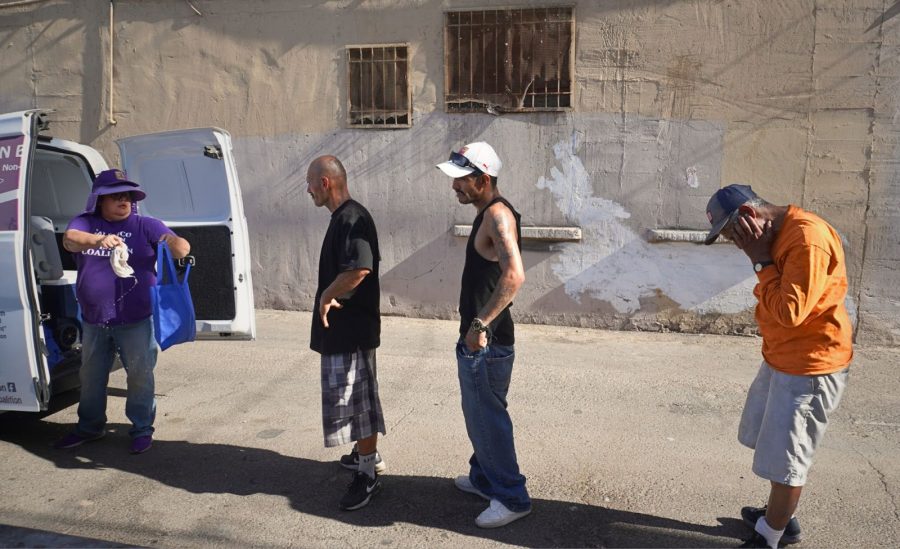
On this July day the sun is still intense at 5 p.m. when we drop off cold water to men at various corners in the city. Some are in makeshift tents, others under any tree they can find, and some in alleys.
In one alley, several welcome Padilla. They sit on the asphalt, leaning against a chain link fence under the shade of a gas station. She gives them cold wet rags, which they drape on their heads to relieve the heat.
“You are a blessing from God,” one says.
After we leave, they remain seated on the asphalt. When we return the next morning at 9 a.m., they are still there. It is already 100 degrees.
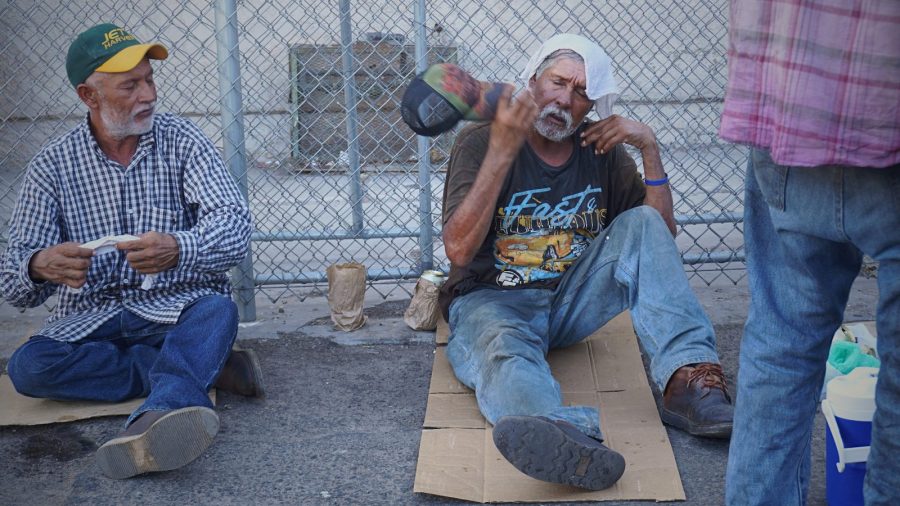
This story by Luis Gomez was originally published by Capital & Main and is part of Covering Climate Now, a global journalism collaboration strengthening coverage of the climate story.
